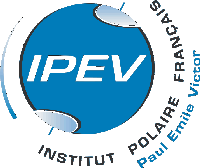The ongoing global climate change has a complex signature in
Antarctica. The set-back of the stratospheric ozone hole (Montreal
protocol), natural variability cycles (Antarctic oscillation), a
complex contribution by the southern ocean, presently result in a
delayed response on a large part of the continent (east Antarctica) but
a strong signature elsewhere (Peninsula, Weddell and Belingshausen
sectors).
It is very likely that climate
changes in the course of the present century will be significant over
Antarctica (Krinner et al. 2007, Genthon et al. 2009) but the magnitude
and detailed chronology of this change remains to be firmly
established. Climate change over Antarctica will affect mass balance
and thus sea-level with global consequences.
Therefore, it is important to
make sure that meteorological and climate models used to predict
climate and mass balance change over Antarctica are calibrated and
validated with proper field data. Such observation is necessarily of
limited spatial and to some extent temporal significance. It is thus
important to also improve our ability to exploit satellite information
to inter- and extrapolate the field data to scales compatible with
models and more generally to the full scale of Antarctica. A main point
about the present project is is that it jointly coordinates field
activities in support of both climate models and satellite remote
sensing.
The objectives of the project
are to deploy, maintain and exploit a set of automatic autonomous
instrumental systems, to carry manual observations on the field , and
to participate in special observing campaigns to improve calibration of
and validate analysis and forecast climate models and satellite data
processing algorithms. Selection of necessary data and of methods to
acquire the data are thus determined by the common and specific needs
of models and remote sensing.
Below is a document (in french)
that describes atmospheric monitoring systems deployed and maintained
by Laboratoire de Glaciologie et >Géophysique de l'Environnement in
Adélie Land as of 2011, from the coast of the ice sheet to ~100 km in
land. The systems at D3, D17 and D47 are part of the CALVA program.
They currently support research on the processes of surface mass
balance of Antarctica as part of the ICE2SEA FP7 european project
(http://www.ice2sea.eu/).

The CALVA~= was approved by
Institut Polaire Francais Paul-Emile-Victor (IPEV) in 2009, to begin
with the 2009-2010 Antarctic field season. This is IPEV program 1013.
|



